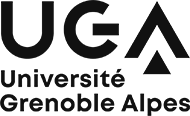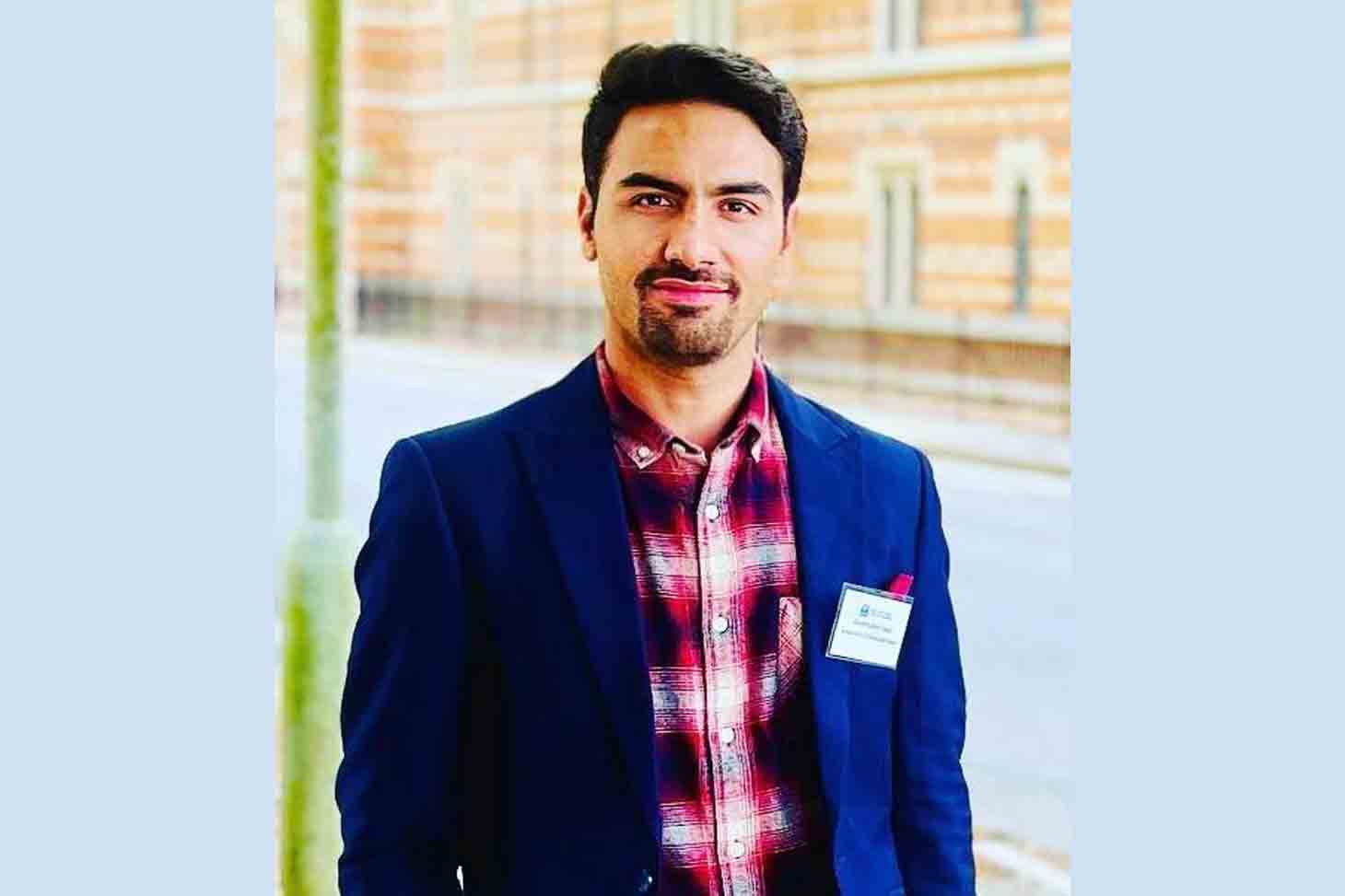This interview highlights the remarkable academic and personal journey of Mufshiq Sapay, a young Afghan civil engineer who, despite political upheaval and threats to his freedom, has continued to pursue research at the highest level. His experience reflects the essential role of universities in safeguarding knowledge, collaboration, and human dignity.
Can you tell us about your scientific background?
My journey in civil engineering began in Afghanistan, where I graduated at the top of my high school class, earning recognition at the 8th Zhautykov International Olympiad in Kazakhstan. This achievement opened doors to international educational opportunities that shaped my career.
In 2013, I received two prestigious scholarships simultaneously: the Turkish Government Scholarship for Excellence and the Afghan Government Scholarship for top university entrance performers. This allowed me to pursue my bachelor's degree in civil engineering at Yildiz Technical University in Istanbul, where I achieved first position in the faculty's final project competition. During my studies, I embraced opportunities to broaden my perspective through an Erasmus exchange at Brno University of Technology in the Czech Republic.
After completing my bachelor's degree with honors in 2016, I secured an Erasmus internship at CY Cergy Paris University's L2MGC Laboratory in 2017, where I worked on fiber-reinforced concrete research. This experience sparked my fascination with how materials behave under extreme conditions, a question that would later become central to my doctoral work.
In 2018, I enrolled in a Master's program in Civil Engineering at Université Grenoble Alpes, specializing in Structural Mechanics and Risks. Under Professor Pascal Forquin's supervision at the 3SR Laboratory, I discovered my passion for understanding how concrete responds to dynamic loading conditions. Unlike many of my Afghan peers who chose to remain in Europe, I made the difficult decision to return to Afghanistan after graduation in 2019, believing deeply that the knowledge I had gained should serve my homeland.
Your academic freedom has been threatened. Can you explain why?
The threats to my academic freedom emerged from my commitment to education that empowers everyone, regardless of gender, and my belief that knowledge transcends borders. As a lecturer at Mustaqbal University in Kabul, I taught civil engineering to mixed-gender classrooms, which became controversial in an increasingly restrictive environment.
During my lectures, I often drew upon my experiences studying in Turkey, the Czech Republic, and France, describing how universities there encouraged critical thinking and equal participation. To me, these were universal principles of education. However, my approach to teaching and my advocacy for inclusive education made me a target for those who opposed such values.
I began receiving warnings through various channels about my teaching methods and professional activities. My wife, who worked as an associate architect with UNOPS after studying in India, faced similar challenges for her work in professional environments with international organizations. The situation became increasingly difficult when written warnings appeared regarding our professional choices and advocacy for equal opportunities in education and employment.
After the political transition in Afghanistan in August 2021, the situation became critical. Those of us with international connections and Western educational backgrounds faced immediate risks. The environment became such that academic freedom was not just restricted but our safety was seriously threatened. We were forced to relocate multiple times, moving between relatives' homes under difficult circumstances.
What made this particularly challenging was having to leave close family members behind in situations beyond our control. The decision to seek safety abroad while knowing loved ones remained in danger continues to weigh heavily on us.
You have been awarded two grants, one from the Pause Program and the other one from the GATES program. How did you manage to secure these grants?
Securing the PAUSE grant reflected the extraordinary compassion and swift action of the academic community at Université Grenoble Alpes. When the political situation in Afghanistan changed dramatically in August 2021, I desperately tried to reach the French embassy for emergency evacuation, but the chaos and circumstances made it impossible. My wife and I went into hiding, moving between safe locations while fearing for our safety.
During those difficult weeks, my former master's degree supervisor, Professor Pascal Forquin, remained in contact with me. He understood the gravity of our situation through my accounts and knew my academic background well. Professor Forquin, along with the head of the department and other faculty members, began exploring every possible avenue to help us reach safety.
They discovered the PAUSE Program (Programme National d'Accueil en Urgence des Scientifiques et Artistes en Exil), which specifically supports at-risk researchers and academics. What made our case extraordinary was the personal intervention of the President of Université Grenoble Alpes, who reviewed our situation and personally signed the application documents. The university committed to providing 40% of the funding for my doctoral program, with PAUSE covering the remaining 60%.
While waiting for approval, we made the difficult decision to leave Afghanistan for Iran in December 2021. Within a week of arriving in Tehran, we received incredible news: we had been granted "Passport Talent" visas to France through the PAUSE Program. We arrived in Paris on December 15, 2021, and I officially began my PhD at the 3SR Laboratory in February 2022. In March 2022, France officially recognized us as refugees, acknowledging the legitimacy of the risks we had faced.
The PAUSE Program didn't just provide us safety; it gave us the opportunity to continue our academic work and contribute to scientific knowledge.
What is your current research focusing on?
My research addresses a critical question for infrastructure safety: How does concrete, the most widely used construction material in the world, behave when subjected to extreme dynamic loading, such as impacts, explosions, or earthquakes? Having witnessed infrastructure vulnerability to both natural disasters and human conflict, I understand that laboratory science can literally save lives.
Specifically, I'm investigating three key factors that influence concrete's dynamic tensile behavior: specimen size, moisture content, and loading rate. Using state-of-the-art experimental techniques at the 3SR Laboratory, including ultra-high-speed imaging capable of capturing 10 million frames per second and advanced Digital Image Correlation methods, we're observing how concrete fractures at the microsecond scale.
One of our most surprising discoveries challenges conventional understanding: under dynamic loading, larger concrete specimens actually exhibit higher tensile strength, opposite to what happens under static loading. We've also found that moisture content significantly affects how cracks propagate through concrete. These findings have direct implications for designing safer infrastructure, from bridges and dams to protective barriers in mountainous regions like the French Alps.
This work has already resulted in two publications in prestigious Q1 international journals. The first, published in the International Journal of Impact Engineering, utilized synchrotron-based ultra-high-speed X-ray phase contrast imaging to analyze microcracking processes in concrete under confined compression. The second paper, published in Engineering Fracture Mechanics, the no. 1 international journal in Fracture Mechanics, investigates dynamic crack velocity and fracture toughness using two full-field measurement techniques, with particular focus on water content effects.
Beyond journal publications, I've had the privilege of presenting this research at prestigious international conferences, including Oxford University (2022), where I presented photomechanical experimental methods for characterizing dynamic crack speed in brittle materials. Additional presentations at DYMAT in Aussois (2023), MécaDymat in Toulouse (2024), and the 8th Journées VH in Grenoble (2024) have allowed me to share findings with the European research community and establish valuable collaborations.
The PAUSE Program represents more than funding; it's an investment in a future where at-risk scholars don't just survive, but thrive and give back to the communities that welcomed them.
How did you settle into the scientific community at the Université Grenoble Alpes?
Arriving in Grenoble in February 2022 was both a relief and a challenge. My wife and I were safe, but we were also adjusting to a new environment while dealing with the trauma of leaving our homeland under difficult circumstances. We had to leave family members behind in situations we desperately wanted to change but couldn't control, which continues to affect us deeply. Starting a PhD under these circumstances felt overwhelming, yet the scientific community at UGA became an unexpected source of healing and purpose.
The 3SR Laboratory welcomed us with extraordinary warmth and practical support. Professor Forquin and his team understood that integration meant more than just providing lab access; it meant helping us rebuild our lives. The university's International Student and Scholars Office (ISSO) assisted with housing, residence permits, and healthcare access. When our daughter was born in November 2024, the laboratory community celebrated with us, understanding that this represented hope after difficult times.
Scientifically, I found a home in the ExperDyn research group, where colleagues treat me as a researcher with valuable perspectives to contribute. I've co-supervised eight Master's students over the past three years, sharing my expertise in experimental techniques while learning from their fresh approaches. Leading undergraduate laboratory sessions in French has been challenging but rewarding; it's pushed me to improve my language skills while allowing me to fulfill my passion for teaching.
The laboratory's collaborative culture has been transformative. Senior researchers freely shared their expertise when I faced challenges. When I presented at conferences in Oxford, Aussois, Toulouse, and Grenoble, the lab provided both financial support and mentorship on effective scientific communication. These experiences have expanded my professional network across Europe and reinforced my sense of belonging in the international research community.
What are your plans for the future?
My immediate goal is to complete my PhD by January 2026. Beyond this milestone, my vision is to build a lasting academic career in France, specifically pursuing an Associate Professor position where I can contribute to both research excellence and education.
To strengthen my qualifications, I'm continuing teaching activities, improving my French language proficiency to B2/C1 level (essential for teaching undergraduate courses), and building the publication record necessary for competitive academic positions.
My long-term research vision focuses on advancing infrastructure resilience against extreme loading. Europe's aging infrastructure faces increasing threats from climate-related events, and my expertise in dynamic concrete behavior could contribute to developing better protective measures. I'm particularly interested in establishing a research group that bridges experimental work with advanced numerical modeling, addressing practical engineering challenges while training the next generation of specialists.
Beyond research, I'm deeply committed to education and mentorship. My own journey has shown me the transformative power of educational opportunities. I want to create similar pathways for students, particularly those from underrepresented backgrounds or conflict-affected regions, helping them discover that engineering can be both intellectually fulfilling and socially impactful.
While I cannot return to Afghanistan safely, I hope that one day, when peace returns, the knowledge and networks I'm building in Europe can contribute to rebuilding infrastructure and educational institutions there. For now, France has become our home, a place where my wife and I can raise our daughter safely, where academic freedom is protected, and where we can contribute meaningfully to society through research and teaching. The PAUSE Program represents more than funding; it's an investment in a future where at-risk scholars don't just survive, but thrive and give back to the communities that welcomed them.


